#like water it's used to communicate an internal change but the ways it differs from water is that it usually occurs at the end of a
Explore tagged Tumblr posts
Text







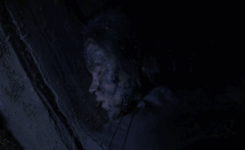
teen wolf meme: [3/5] motifs -> resurrection
It's different now. I think dying did something to him. It did something to me, too. But none of it was good.
#teen wolf#lydia martin#kate argent#tracy stewart#scott mccall#peter hale#jackson whittemore#derek hale#hayden romero#twedit#twgifs#mine#my gifs#twmeme#yes i'm aware that it can definitely be argued whether resurrection is a motif in teen wolf or just a recurring plot device#and while it's certainly not a symbolic motif like fire and water was previously#the way it's utilized within the show does make me read it moreso as a motif than just plot#like water it's used to communicate an internal change but the ways it differs from water is that it usually occurs at the end of a#narrative arc whereas water typically appears at the beginnings#water is used to signify a character's beginning descent into something new and the resurrection is once that change is completed#jackson's arc in season two is started with his submersion in water and it's ended with his resurrection#and lydia's arc in eichen house in 5b is much the same with her in the river in her mind at the beginning and then her dying and coming bac#at the animal clinic#even lydia's arc in season two can be read within these parameters#it begins with her in the hospital shower as she digs hair out of the water and ends when she resurrects peter#so while yes there is a reversal there and lydia isn't the subject of the resurrection she is the agent of it#which honestly the same can be said for theo in 5a#basically what i'm getting at here is that my reading of the resurrections in teen wolf as a motif is very valid and you should all agree#also i completely forgot about jackson's resurrection until i was literally writing these tags so i had to go back and make a gif for that
95 notes
·
View notes
Text

Hello, little animal…
An illustration for my "The Black Pyramid" story, inspired by the "Rain World" game - I haven't played it myself, but I enjoy watching my mate play it. I love its visuals, world and lore, so I got inspired to try to draw something in a similar style. Plus I think it's an interesting interpretation to see a parallel between Towers and Iterators - their idea and nature are very different, yet they feel similar in a way :')
Towers are mysterious structures of unknown but ancient origin, which have colossal amounts of energy and are capable of remembering the imprints created by the "songs" of living beings, having a kind of mental reality inside them. It is not a language of words or pictures, rather of feelings and inner rhythms, which beings create and feel both physically and emotionally.
I see the inside of the Towers as a kind of layered and multi-story labyrinth, reminiscent of both some kind of mechanism and magical, even living structure. They are inextricably linked to the ecosystem (and capable of changing and creating ecosystems), evolve, and even seem to have some their own relationships with each other, that are so distant and incomprehensible to all the living beings.
Koties use them as an energy source, and as an unique tool for communication and information storage. They are the only known species to have such advanced intelligence that allows them to use information from the Towers' internal network so efficiently, and they even learned to tune and "tame" the Towers. But what the Towers actually are is a mystery even to them. Some see them as gods, as a physical embodiment of mother nature, while others see them as natural mechanisms of how the world works. There are plants, animals, water, the sun and the stars… and the Towers.
One young and ambitious Kotie wanted to find the answer… To the Tower, he is just a little animal, one of many others, living and dying in its world, while its life is like eternity; who knows what it thinks and whether it is capable of thinking. The little animal, however, has grown an inquisitive mind, and wants to understand it.
#art#illustration#fantasy art#fantasy world#surreal art#worldbuilding#personal art#oc#original character#original story#lore#kotie#koties#Atram#villiedoom
147 notes
·
View notes
Text
The Plurality of... Avatar: The Last Airbender
Major Spoilers For Avatar: The Last Airbender ahead! And minor spoilers of related properties.
Water. Earth. Fire. Air. Long ago, the four nations lived in harmony. Then everything changed when the Fire Nation attacked. Only the Avatar, master of all four elements could stop them. But when the world needed him most, he vanished.
Welcome to the world of Avatar: The Last Airbender. A world where some people are born with the gift of bending, an ancient art that allows them to control one of the four elements. But only one. Even if they came from parents who were different types of benders, each bender only gets a single element.
But there exists a single exception to this rule. The Avatar. The one person in the world who can master all four elements.
But we're not here to talk about the Avatar's cool bending powers. We're here today to talk about…
The Plurality of The Avatar
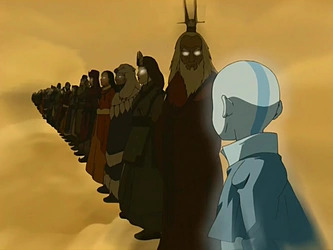
Plurality: A state of multiple self-conscious agents, or "headmates," sharing a single body.
The Avatar isn't merely a jack of all trades bender. Simply knowing how to use the four elements is only a small part of their toolbelt. And perhaps one of the least important. Despite the series placing a strong focus on the need to master all four elements, perhaps the actual most important thing about the Avatar is that they reincarnate and are connected with their past selves.
This allows each Avatar to speak to and learn from the experiences of past avatars. This is most prominent in what's called the Avatar State, a sort of super form where their eyes (and downvotes) glow as they channel the skills and abilities of all the past avatars through them.
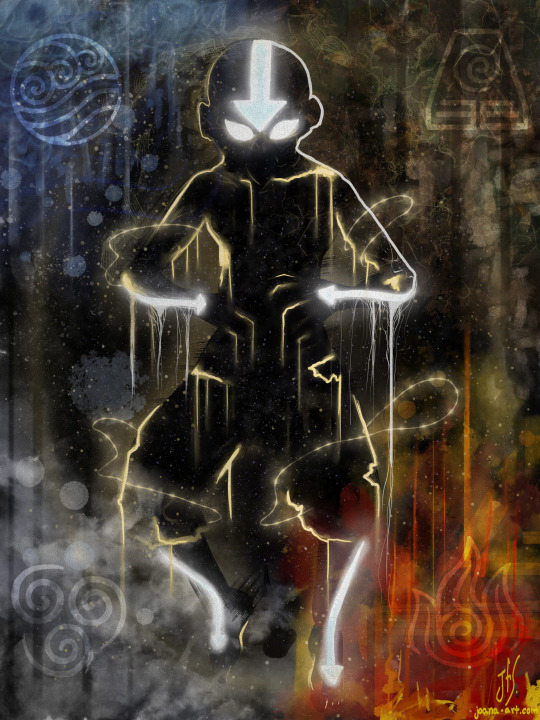
(Art by @joeyscomics)
Aang's avatar state is a sort of blending of the avatars without a distinct identity of its own.
Additionally, there were also a couple instances through the show where Aang, the current avatar, switches into other avatars.
During the season 1 mid-season finale, The Winter Solstice, Aang first contacts Avatar Roku, his firebending predecessor. Trapped in a temple with no way out, a group stands outside the door prepared to strike as soon as the avatar steps through. They expect to see a small child walk through the doors. But what they see instead is Avatar Roku.

Once the enemies have been defeated and fled, Roku turns back into an exhausted Aang, who drops to his knees.
In season 2, this happens again with Aang switching into avatar Kyoshi. Again, sure to spirit magic, Aang physically transforms into Kyoshi.
(Obviously, real plurals don't physically transform, as cool as that would be. But spirits in the avatar universe do have shape-changing capabilities, being able to alter both their own forms and the forms of others. There are many examples in Legend of Korra and the comics, but one big one we see in A:TLA is Koh The Face Stealer, who as you can guess, steals people's faces, physically transforming their bodies. Simply put, we can accept the Avatar Spirit as having the ability to naturally shapeshift.)
So there's the basics of the Avatar's plurality. We have multiple people sharing a body. We have system-like internal communication. We have switching. And we even have a state that could be best described as blendy.
In the plural community, a system that's formed from past lives is sometimes called Fenigenic or Phoenigenic, drawing its name from the phoenix; The mythical bird that dies and is reborn from its ashes.
From Pluralpedia:
Fenigenic is a system origin that describes systems who formed from past lives in some way. They may believe they left their past life and were reborn again as a system, came into the system from a past life into the body (causing plurality), were a system in a past life and were reborn again with the same one, and/or various other scenarios. This is an intentionally broad label that can describe many different experiences.
With these established facts, without a doubt, the avatar would qualify as a Pheonigenic system.
But I want to delve even deeper. Because at its core, Avatar: The Last Airbender isn't just a story about a kid who happens to be plural. It's a story about plurality. It's a story about dissociation. About connecting with and building connections with parts of yourself. And about taking responsibility for those parts, even when you aren't actually them. And all of this is what make the series so fascinating from a plural perspective!
The Avatar State as a "Self-Defense Mechanism"
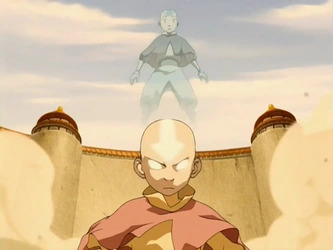
At the beginning of season 2, Aang enters the avatar state while scared of losing his friends, and talks to Roku again. Roku explains to Aang what the avatar state is.
The Avatar State is a defense mechanism, designed to empower you with the skill and knowledge of all the past Avatars. The glow is the combination of all your past lives focusing their energy through your body. In the Avatar State, you're at your most powerful... but you are also at your most vulnerable.
At this point, Aang learns that if he dies in the Avatar State, the cycle breaks and the avatar will never reincarnate again.
Let's take another look at that wording though. "The Avatar State is a defense mechanism." It's a word choice that you wouldn't expect to find in a fantasy cartoon. "Defense mechanisms" are more a psychological term, having their origins in psychoanalysis.
Why does this matter?
Because the avatar state, at its core, is a dissociative state. And dissociation has often been described as a defense mechanism itself. From Wikipedia:
In mild cases, dissociation can be regarded as a coping mechanism or defense mechanism in seeking to master, minimize or tolerate stress – including boredom or conflict.
And later when talking about traumamatic dissociation, it goes on to explain:
Symptoms of dissociation resulting from trauma may include depersonalization, psychological numbing, disengagement, or amnesia regarding the events of the abuse. It has been hypothesized that dissociation may provide a temporarily effective defense mechanism in cases of severe trauma; however, in the long term, dissociation is associated with decreased psychological functioning and adjustment.
What's interesting about the avatar state is that, while there are some times Aang goes into the Avatar State to protect himself, often he enters it as a response to stress in general.
The first couple times we see Aang go into the Avatar State, it's to physically protect himself. Once to freeze himself. Then again to fight Zuko. But the next time he enters the Avatar State, there's no danger. There's no need to use it.
This is when he's at the Southern Air Temple, and sees his old friend Monk Gyatsu. It's when he really learns and has to process that he's the last airbender and everyone he ever knew is dead.

Aang doesn't use the avatar state as a physical defense mechanism here. Rather, he enters the avatar state as a psychological defense mechanism.
It takes over because he's disengaging. He just learned something traumatic and he can't come to terms with it. He shuts down, and his friends have to reach him through the pain.
This becomes a pretty common theme throughout the series from then on. Sometimes, it's the physical danger that causes him to transform. But other times, he's triggered into this state by his friends being in danger, or from losing Appa.
Time and time again, we see the Avatar State as being triggered by extreme mental stress more often than by any sort of physical stress.
A big part of Aang's journey though the series then becomes learning to master the Avatar State and the dissociation that comes with it. To take control of it instead of letting it control him.
Avatar's Take on System Responsibility
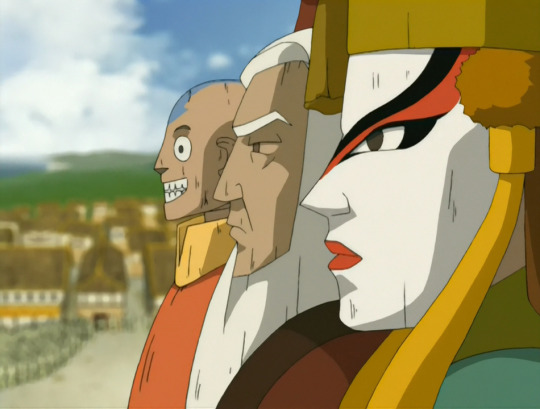
"System responsibility" is the concept in the plural community that if one headmate does something, then the entire system of headmates is responsible for it. Some feel this is unfair, but for practicality, it makes sense. If someone steals something, then obviously you can't send only one headmate to prison. So a big part of being plural ends up having to accept that if someone else you share a body with does something wrong, even if you don't agree with it or don't even remember it, you're responsible for it.
And Avatar has its own form of this, where all Avatars have a single spirit that is reincarnated, and are therefore responsible for the actions of their past lives.
This is most exemplified in the episode Avatar Day.
In this episode, the Gaang wander into a town that's celebrating the titular Avatar Day. They see a parade with massive wooden floats of the past three Avatars. Aang, Roku and Kyoshi.
What appears to be a nice festival that the Gaang is enjoying is quickly turned on its head when a villager sets fires to the figures and the crowd begins chanting "down with the Avatar" while the figures burn.
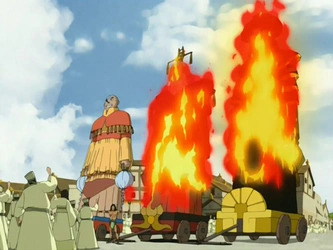
It turns out, this town believed Avatar Kyoshi murdered their leader, Chin The Great.
In order to prove he wasn't a murderer, Aang volunteers to stand trial. Even though Aang and Kyoshi are separate people in a way... in another, they aren't. And Kyoshi being a murderer is something that would continue to follow Aang around.
So he agrees to go on trial, and refuses encouragement from his friends to escape. And he could escape if wanted to.
When viewed through the lens of a plural system, what we see here is a demonstration of system responsibility, where Aang is showing himself willing to take responsibility for the actions of past Avatars.
Later in the episode, Katara decides that they need to call Kyoshi herself to prove their innocence, and dresses Aang in Kyoshi's clothes to "see if it might trigger something."

And it actually does! This stunt causes Kyoshi to take front! (With a full body transformation because spirit stuff.)
In the end, Kyoshi confesses to killing Chin, who she calls Chin the Conqueror, and Aang is willing to accept the outcome of the trial.
It's not just this one episode though. It's a running theme of the series.
The franchise even.
In season 3, Roku reveals that the whole reason the world was in danger was because of his connection to and weakness in stopping Fire Lord Sozin, who went on to wipe out the Air Nomads. Aang is left with the responsibility of making up for Roku's mistakes.
In the books, it's revealed that Avatar Kyoshi's earliest trials were a direct result of the failings of Kuruk, the avatar before her. And his were a result of Yangchen's mistakes. And in the sequel series, avatar Korra is left to make up for the mistakes of not just Aang, but also Avatar Wan who started the cycle.
The Avatars are people who share a single soul. Each new avatar can be viewed as a new host in the same system. And each one therefore is responsible for making up for the mistakes of those that came before.
This is what the avatar franchise, at its core, is about. A single system making mistakes through life after life, and having to fix those mistakes in the next, hopefully making the world a better place and keeping balance along the way.
A Story of Connection and Balance
With all of this in mind, Aang begins his journey is a system cut off from his headmates.
A central theme of the story is restoring that connection. This story really begins with Aang entering the avatar state in the Southern Air Temple. This is the first time he loses control and nearly hurts the people he cares about.
The avatar state here is something powerful, yes, but also something to be feared, making him a danger to his friends. He doesn't understand at the time what that state is exactly. It's something that leaves him confused and scared.
Through the series, he gradually learns more about the avatar state and his past lives. He begins to learn from avatar Roku. Then from Kyoshi. He learns about their lives, and has to reconcile their past mistakes. He also has to learn to accept himself as the avatar. Something which he struggled with throughout the series, and led to him fleeing his people.
At the end of season 2, Aang nearly dies in the avatar state. In a canon webgame called Escape from the Sprit World, while unconscious, Aang enters the spirit world and goes on a journey where he has to reconnect with the past avatars in order to prevent the avatar cycle from being broken, going back all the way to meet Avatar Yangchen, the airbender before him.

After meeting and learning from all these avatars, he's able to awaken with a new connection to them. (Albeit with no memory of this side quest.) Although he's told he won't be able to enter the Avatar State for the time being.
After this, on the Summer Solstice, he was able to meet with Roku once again to learn about Roku's own past, and his history with Fire Lord Sozin.
All of these events laid the groundwork for a final realization in the series finale. That the past avatars were always with him. He's able to meditate and reach out, and commune with each of them.
Finally, Aang has become a fully-realized avatar, tearing down barriers that kept him separate from the rest of his system!

And in the final battle, Aang is able to access the avatar state with full control over it for the first time.
Some would say that this was because of a conveniently-placed rock. Which, yes, that might have been the literal trigger that unblocked his chi. But narratively, I would argue that it was the connection with the past avatars that truly allowed him to access the avatar state again. That finally connecting with them all was how he truly earned this ability!
Conclusion
So there we have it! The story of Avatar: The Last Airbender is not just an incredible story, but an incredible story of plurality and connection between headmate.
This was really fun to write about, and I enjoyed talking about the plurality of the Avatar.
Thank you so much for taking the time to read!
I think with that, I've covered everythi...
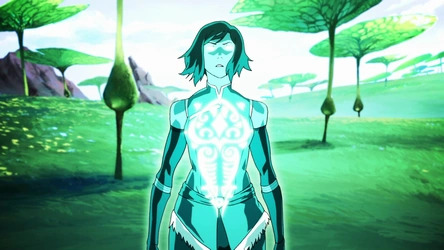
Oh... right...
I guess I didn't cover everything about the plurality of the Avatar, did I?
Guess I need to plan for a Plurality of The Legend of Korra in the future! 😁
(And if you're interested in more of my ramblings about plural representations, you can check out my post about the Plurality of Batman. Or you can read about The Plurality of The Hybrid Chronicles: What's Left of Me, where I analyze a novel about a world where everyone is born with two souls.)
#pluralgang#avatar the last airbender#atla#aang#a:tla#avatar state#avatar aang#the last airbender#avatar#avatar last airbender#nickelodeon#plural#plurality#endogenic#pro endogenic#pro endo#sysblr#system stuff#plural representation#actually plural
195 notes
·
View notes
Text

‧ new year's shifting pick a pile ✧ ‧˚₊ ❆ ‧ ₊ ⊹˚
{ i've been meaning to do another collective reading but honestly forgot, but hey it's a new year so... this will just be anything you may need to hear right now. i hope you find what you were looking for, and if i was able to help in any way then i'm glad. and just like any other reading you find, take what resonates and leave what doesn't }

❆ take a deep breath... and choose the pile you're most drawn to...

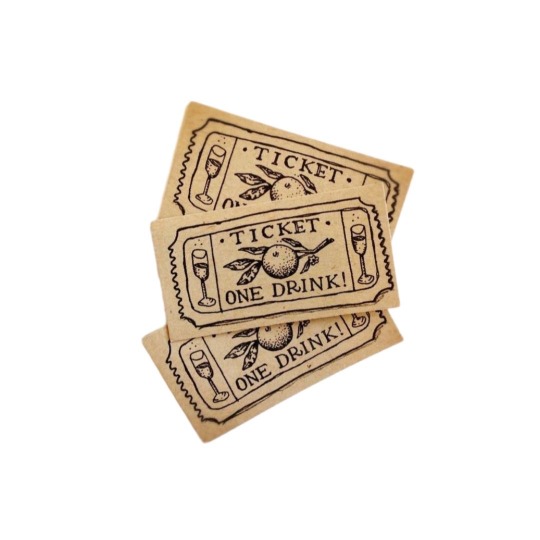


✿ PILE ONE ⋰˚☆
KEYWORDS/SIGNS: rain, orange slices, pie, hot tea, 777, gloomy weather, allergies, ears ringing, dogs barking/whining, 222, trust, hourglass, boredom, keys, heart ache, homesick, road trips, four leaf clover, golden child, shaking hands
❆ a decision, a choice. is this right? am i making the wrong choice? let’s take a deep breath ok? it seems you are at a crossroads of sorts. perhaps you don’t know what to do with yourself when it comes to your shifting journey. that’s ok! whatever this issue is for you specifically, i believe you already have they answer. let’s slow the roll, take some deep breaths and try to see this clearly. to me it seems you are over consuming information. i suggest you log off of social media for a bit, sit with yourself and look over the information you already have, discard what no longer fits you and keep what works. you know you best! some random person online cannot (unfortunately) fix your supposed problems for you. no matter how much advice you seek, you can only do that. you need to let go of this internal struggle, you are only fighting yourself, creating resistance. if the answers still seem to be foggy to you, perhaps you can meditate and look for the answers there.
❆ it seems your mind might be in the midst of chaos, or perhaps your life is as well. yet when it comes to your shifting journey you may just be on the brink of a spiritual awakening you desire (or need). the clarity is within YOU. it looks like you are walking down this path with a blindfold on, unsure of where you are going, what choices to make. maybe there is something you don’t want to face. but these fears and worries do not need to hold you back. let’s try to use them to your advantage. face what is holding you back and if you just can’t rid it, know that it does not stop you, only shows a different part of yourself.
❆ instead of putting your journey and motivations on others, it’s time to look within. there’s only so much more “new” information you can gain. your journey is yours and yours alone. that doesn’t mean it has to be a lonely one though. trust that you have the answers, and trust that there is still a community for you! having so many different pieces of information and advice forced upon you to try and digest and make use of is not helping you. sit with yourself and ask yourself if there is genuinely anything you still need to learn from others at this point? at what point do you let it all go and just use it to your benefit?
❆ maybe creating some sort of routine will help you as well, setting up some self-discipline. on the flip side you may need to let go of perfectionism as well. you don’t have to do anything you don’t want to. shifting is supposed to be fun. maybe reflect on what you can do to make this all the more enjoyable. let go of the process and remember where you started.
SONGS ✧
‧ ₊ escaper - sarah kinsley
“ everything changed
but my mind couldn’t change me ”
‧ ₊ wildflower - beach house
“ need a companion…
a hidden prayer
you know your not losing your mind
what’s left, you make something of it ”
‧ ₊ eye contact - fromis_9
“ When I closed my eyes and felt it, there was a small gap between you and me
I want to see you again, I want you so…
When you look at me, the moment I started believing in eternity
When I look at you, it was possible because of you ”
METHOD SUGGESTION ✧
{ remember you don't need a method! }
‧ ₊ void/pure consciousness
‧ ₊ julia method

✿ PILE TWO ⋰˚☆
KEYWORDS/SIGNS: waterfalls, cinnamon, 444, crows, 88, water damage. doubles, holiday, patience, crowns, one of a kind, eye on the prize, chocolate cake, stars
❆ let’s take a moment to give yourself a pat on the back! give yourself space to celebrate your accomplishments, big or small, bright or dim. it’s ok to reflect and give yourself credit for all you’ve done, someone has to, and you deserve it. you are at a place of harmony and balance in your journey. embrace it! know that you already have it, and if necessary take a breather, pause and look around yourself. look at all you’ve achieved! it will still be here for you, even if you take a break from it all. whether it’s here or in your desired reality, you are surrounded by so much love and support. even on your worst days. your vision is clear, if you're ready, know that it is yours, and make that first step. perhaps all you need is a little reassurance, you got this!
❆ you’ve clearly invested a lot into yourself and your journey. your hard work will pay off, you just need to sit back and let it. perhaps you are confused over slow results. yet you should persist, for it is already yours. stay in a mindset of gratefulness, if needed share your feelings with someone, talk it out.
f❆ stay steady and clear, you are on the right path. if victory is what you want, victory is what you’ll get. you are just on the verge of making a breakthrough. keep going. embrace all your ideas and write them down. let yourself create your vision, live in that moment. your creativity is your strength. you may be overwhelmed with the excitement, all the possibilities. harness it and let it push you further. it is all up to you.
SONGS ✧
‧ ₊ mariners apartment complex - lana del rey
“ i ain’t no candle in the wind
i’m the board, the lighting, the thunder…
they mistook my kindness for weakness ”
‧ ₊ numb - men i trust
“ please forgive me if i ever did you wrong
i’ll be your candle; burn me upside down ”
‧ ₊ moon song - beabadoobee
“ i’m lying on the moon
my dear, i’ll be there soon
it’s a quiet and starry place
time’s we’re swallowed up
in space we’re a million miles away ”
METHOD SUGGESTION ✧
{ remember you don't need a method! }
‧ ₊ intention
‧ ₊ lucid dreaming

✿ PILE TWO ⋰˚☆
KEYWORDS/SIGNS: love, pairing, 555, daydream, interruptions, cats, heartbreak, lonesome, tears, sleeping in, not sleeping enough, castles, cages, 333, 1212, floating
❆ it has been a long journey for you, a hard one at that. you may have found yourself in many setbacks. perhaps you blame yourself, there’s a lot of sadness and anger here. in this moment you can choose forgiveness, forgive yourself and know that it’s all ok. whatever has happened, there’s no use for guilt. open up to a friend, a stranger, someone. vocalize your feelings and hardships. with mistakes you can learn and grow from them, and ultimately come out stronger in the end. show yourself grace and love, and set your eyes on newer and better things. know that no matter what you can still trust yourself. take small steps and build yourself back up. find the romance and beauty in shifting again, it’ll always be there.
❆ i see that you may be someone shifting for love. keep your partner in mind. despite everything, please remember you are deserving of love and happiness. keep your love close to you. just as you wish to be with them, use it to bring you two together. your emotions are not a flaw, feel them, sit with them, BE them. wherever you are and where you want to be, what are you feeling? are you in your bed? perhaps the arms of your lover. whoever you want to be, FEEL IT, let your compassion drive you forward. there’s no need to be embarrassed over your feelings, they are valid, and so are you.
❆ you need to make the decision. you can’t sit in despair forever, pick yourself up and know that there are better things for you. use it all to your advantage, all the bad just as the good. being interrupted during a meditation? that’s fine, it doesn’t have to stop you forever. Distracted? that’s ok, take a deep breath and know that it doesn’t have to hold you back, unless you let it. you don't have to have the most squeaky clean mindset ever to shift, that doesn’t make a whole lot of sense does it? accept where you are at, and accept where you want to go.
SONGS ✧
‧ ₊ whale - kim sejeong
“ i find you hidden in the dark night sky
when i walk on the purple road among the clouds
Can I face you only at the end of the darkness?…
Where did you disappear
i miss my whale…
time has become today in front of you ”
‧ ₊ high - slow pulp
“ i have to much in my pockets
i wish they were empty…
my limbs are feeling lazy
why won’t they work with me?
and now i can’t seem to focus my eyes
won’t let me see ”
‧ ₊ sweet nothing - taylor swift
“ they said the end is comin’,
everyone’s up to somethin’
i find myself runnin’ home to your sweet nothings…
to you, i can admit that i'm just to soft for all of it ”
METHOD SUGGESTION ✧
{ remember you don't need a method! }
‧ ₊ fives senses
‧ ₊ staircase method
‧ ₊ wake back to bed
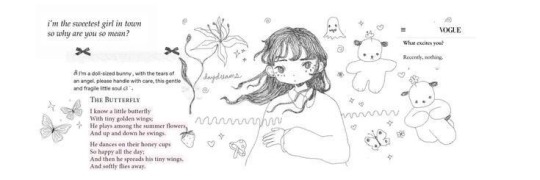

#emma’s pick a card ✽#reality shifting#shiftblr#shifters#shifting antis dni#shifting blog#shifting community#law of assumption#shifting#shifting consciousness#meditation#pick a pile
51 notes
·
View notes
Text

Introduction
We are in a period of crisis that we in MEDCs cannot yet see. The signs are there if you look hard enough but at the moment the water is still flowing, the crops are still reliable the ski lifts are still running. The first wave of climate refugees are trying to make their way into Europe but they are being dismissed as ‘economic migrants’ or those displaced by war. In all likelihood, MEDCs will not feel the effects of climate change for some time; our relative wealth will push the impacts onto those who haven’t the means to adapt or whose local climates were less temperate to begin with. The longer we wait to act, however, the bigger the coming crunch will be.
Collectively, MEDCs are responsible for the overwhelming majority of cumulative carbon emissions and will have to radically change their energy and transport systems if an ecological disaster is to be avoided. Who will bear the brunt of the costs and who will get rich from this process is sadly predictable. The working class in MEDCs and most people in LEDCs will pay for the fossil fuel addiction and growth-at-all-costs model of the capitalist system. We have already begun to see this happen in the black, working-class communities devastated by natural disasters in the USA and flooding killing thousands in Bangladesh.
Capitalism relies on constantly increasing accumulation of profits. This has been achieved historically by appropriations (a polite term for thefts) both internal and external to the nation state. Internally, in Europe from the fifteenth century onwards, this has followed the model of stealing common land from the people to create a proletarian class dependent on wage labour to support itself. Externally, this expansion was tied to a move outside Europe’s borders to exploit natural resources and labour in other locations. Thus colonialism and capitalism were, from the beginning, linked to processes of resource extraction and accumulation.
Capitalism is now in crisis; with so few areas beyond its reach, there are no easy sources of growth to appropriate, and the ability of the earth’s ecosystems to accommodate further growth is being seriously questioned. How then to continue growth and profit? In MEDCs, we are seeing a fresh attack on workers’ rights, with more precarious jobs, lower pay and poorer social care. In LEDCs, the neoliberal development model is pushed with privatisation and financial deregulation extracting the most profit for the capitalists.
We write this pamphlet to discuss the environmental problems that capitalism has created, with a focus on climate change and the false solutions offered up to us. There has been wider understanding of environmental issues since mainstream publications such as Silent Spring, Gaia and An Inconvenient Truth; however, an anti-capitalist critique has been lacking.
Capitalism is a system reliant on the total exploitation of nature; whether that be sacrificing our clean water to frack for hydrocarbons or sacrificing our children to the production line. We must develop our ideas of what a different future may look like outside the constraints of both capital and fossil fuels. We must also critique the false solutions offered by ‘green capitalism’ and increased state control. It is our contention that the world in fifty years will look radically different from what we see now. The question is whether we are moving towards a sustainable future for humanity, or one of catastrophe.
#anti-work#capitalism#climate crisis#collapse#colonialism#ecology#free trade#global warming#Green anarchism#green capitalism#green energy#housing#military#neoliberalism#renewable energy#wind energy#anarcho-communism#anarcho-primitivism#anarchism#anarchy#anarchist society#practical anarchy#practical anarchism#resistance#autonomy#revolution#communism#anti capitalist#anti capitalism#late stage capitalism
9 notes
·
View notes
Text
Primal Sirens AU Info 4: The Turning Process
The most powerful magic a siren can perform is to change a human into a siren. No siren alive knows the reason why they have this ability in the first place. An ancient magic that lingered from a time long forgotten? An alternate way for them to keep their numbers up incase of a sudden decline of population? It could be anything, but the process for it is ingrained into every siren including already turned sirens. The start of the process is for the siren to sing while a human is drowning. The magic within the voice envelopes the human’s soul as the last breaths leave them. Trading their old human life for a new one as the song guides the soul to remain in the body as it is imprinted by the ocean itself. This is where it gets tricky for the siren. The singing siren has to have enough energy to keep the process stable. Too little and the human will simply drown, too much and it’ll just kill the human by overloading their internal systems. If the siren is able to keep the flow of energy steady and for a long while, it’ll make the transformation successful. If they do this steady singing for a longer period, the transformation will be smoother and faster. Most of the time though sirens will only do as much as needed since singing like this takes a toll on their own bodies. Going further could risk full numbing and barely be able to get themselves and the turning human to somewhere safe to recover. This is the most vulnerable both are during this process. The transformation can take up to a few days to a week to complete with apex predators taking the longest. The human’s clothing will either be removed by the siren that turned them or they will simply tear off as the body changes shape and grows. It’s like a dreamless, comatose sleep for the turning human where they have to be guarded by the siren that turned them. In only this and one other time in air-breathing sirens’ lives that they are able to breathe underwater. Waking up after the transformation is a disorienting adjustment. The siren that turned them is usually the one that would teach and guide the newly turned siren in how to survive and live in their new life. Each relationship between a siren and the one they turned is different. Some good, some really bad. It usually takes years before a turned siren can survive on their own and master their use of singing. Even with guidance, if they don’t adapt to their new life they could end up dead by predators, starvation, etc… The reason why a siren turns a human varies to the individual siren. Love, spite, grief, greed, anything. It’s most likely due to turned sirens that taught human languages to other natural sirens thus why some sirens can verbally communicate with humans. The type of tail that develops is by chance of the water itself. Modern sirens have forgotten this, but the ocean contains within its waves the ‘memory’ of all its residents. From modern day species we see today to the extinct creatures from the first life within the waters. During the turning, it’s whatever’s ‘memory’ is strongest within the waters surrounding the human during the turning process. Usually the strongest 'memories' are of modern creatures as they are the most recent, but never complete covers up the past 'memories'. It’s why, on very rare instances, a turning human becomes a Primal Siren with the tail of an extinct creature… ….and there’s only so many fossils that humans have discovered and know about. The ocean is both vast and ancient with countless species that had lived in it the entire time. There are many undiscovered extinct species’ fossils yet to be found, yet a few have already returned as the tail of turned Primal Sirens.
21 notes
·
View notes
Text






























International Day of Forests
International Day of Forests is celebrated on the 21st day of every March. Forests cover the dominant terrestrial ecosystem of the planet and are distributed across the globe. It is a large area that usually has hundreds and thousands of trees, herbs, shrubs, other living organisms and more. The term forest usually defines the presence of trees in ample number, and the Earth has different types of forests and a wide variety of trees present in it. Trees are playing a significant role in maintaining the environment and living beings surviving on it. They are solely responsible for producing the vast majority of air or oxygen without which life would be impossible. For various reasons, forests are being depleted, destroyed and several millions of hectares of forests are cut down. With the increase in deforestation activities, the ecological system has been degraded completely. International Day of Forests or Forest Day is an awareness Day celebrated in such a way to let people understand the importance of forests and the essential role of trees in our lives. The international Day will also address on issues such as deforestation.
“A nation that destroys its soils destroys itself. Forests are the lungs of our land, purifying the air and giving fresh strength to our people.” – Franklin D. Roosevelt
History of International Day of Forests
The International Day of Forests (IDF) has been celebrated since the year 2013. The United Nations General Assembly proclaimed 21st March as IDF on November 28, 2012. Since then, the Day has been observed with various events and activities to raise the awareness about the importance and benefits of the forests, its types, trees outside the forests to the people of current and future generations. Earlier to this IDF, World Forestry Day had been observed which has originated in 1971 at the 23rd General Assembly of the European Confederation of Agriculture. Food and Agriculture Organization (FAO) had established it and started celebrating it from the year 1972 till 2012. IFD is created to raise awareness about the forests and issues of deforestations as a whole. Each year, IDF or Forest Day is celebrated with a theme which is chosen by the Collaborative Partnership on Forests.
On each Forest Day, countries from all over the world are encouraged to undertake useful efforts to organize any local, national, or international activities or events involving forests and trees. Also, the United Nations works together with the governments, community organizations, and the general public as a way to promote both local and global activities for the IDF. Activities include tree planting campaigns, photo exhibits that portray the importance forests and trees, and sharing infographics, videos, news messages via social and other media. As human society and forests are influencing each other in both positive and negative ways, it is vital to promote awareness about the role of forests as with the humankind. Forests are providing the ecosystem services to humans and are serving as tourist attractions.
However, human activities like harvesting forest resources, deforestation, and more have negatively affected the forest ecosystems and which in turn are affecting the human life indirectly through natural disasters and environmental changes. The forests account for about 75 percent of the gross primary productivity of the Earth’s biosphere. It contains about 80 percent of the Earth’s plant biomass. According to the survey by FAO in 2006, forests covered four billion hectares, i.e., 15 million square miles or approximately 30 percent of the world’s land area in total. It contains more than 60,000 tree species and in which many as of them are yet unidentified species. Forests are actively contributing to the balance of oxygen, carbon dioxide and humidity in the air and they also protect the watersheds, which supply fresh water to the rivers.
Forests are the primary source of food, fibre, water and medicines for about 1.6 billion of the world’s poorest people approximately. It also included the indigenous peoples with unique cultures. More than 13 million hectares, i.e., 32 million acres of forests are lost every year which is an area roughly the size of England. Forests are providing shelter for 80 percent of the terrestrial species including animals, plants and insects. It is essential to know that the forests are playing a critical role in the climate change including the global warming. According to the UN, deforestation results in 12 to18 percent of the world’s carbon emissions which is almost equal to all the CO2 from the global transport sector. Equally crucial, the healthy forests are found to be one of the world’s primary ‘carbon sinks.’
How to Celebrate International Day of Forests
Celebrating the International Day of Forests is quite simple. Get to know more about the forests, their role in ecological balance and different types of forest ecosystems. On this awareness Day, you can start planting a tree and encourage people around you to do so. Spread information regarding the positive effects the environment gains with proper maintenance of the forests. Make an initiative to save the planet from greenhouse emission, pollution, climate changes and more by planting as many trees as you can. You can start campaigns joining with any organization to work towards saving the Planet actively.
Source
#North Saskatchewan River#Fort Vermilion#Banff National Park#Yellowstone National Park#Glacier National Park#Columbia River#Rocky Mountains#Sierra Nevada#Kootenai National Forest#Montana#Wyoming#Alberta#British Columbia#Canada#USA#travel#original photography#vacation#tourist attraction#landmark#landscape#International Day of Forests#InternationalDayOfForests#WorldForestryDay#21 March#woods#flora#nature#countryside#summer 2024
4 notes
·
View notes
Text
The prospects of a united front preventing Donald Trump returning to power in the US looked a little bleaker this week.
Let’s be frank they weren’t great to begin with. To an outsider Joe Biden just seems to be too old to be a viable candidate. He doesn’t pass the first impressions test. Look at him and you do not see someone capable of serving another four years.
True, he won Michigan's Democratic presidential primary a few days ago– but he was hit by a significant protest vote from left-wing and Arab-American voters angry about his qualified support for Israel's war in Gaza.
And at this point that second cause for worry, and, frankly, panic kicks in.
The left urged registered Democrats to vote for the "none of the above" category to express their opposition to Biden's Israel policy – and about 100,000 did. Their votes represent a wider chunk of the electorate who could well stay at home or vote for minor Green or left-wing candidates and deny the Democrats key states.
In a deeply divided country with a warped electoral system that favours the Republicans, it does not take many voters abandoning the Democrats for Trump to retake power.
I wrote at the weekend about how the Trump example shows how hard it is to unite against a dictatorial threat. People, or to be fair, many people, cannot put aside their commitments and ally with men and women they profoundly disagree with for the greater good of defending democracy.
On the one hand, they cry that Trump is a fascist and white supremacist. On the other hand, they refuse to use all available means to stop him. Mainstream liberals do not moderate their demands to win over wavering conservatives. The far left sees the Biden administration as its true enemy.
The history of the struggles against Nazism are highly relevant to the dilemmas and the dangers we face today.
As Hitler began his rise to power at the end of the 1920s, the European far left was in the same place as a section of the modern US left.
The threat of fascism was as nothing when set against its hatred of moderates.
In 1928 the communist movement adopted one of the cruellest and stupidest policies in its history, which considering the history of Soviet communism was nothing more than a history of cruelty and stupidity was quite an achievement.
Partly because it helped Stalin in his internal power struggles in Russia, Moscow ordered all Europe’s communists to follow an ultra-leftist policy. They were told to denounce moderate leftists as “social fascists”, and fight them to the death.
Communism’s triumph was inevitable, the party line went. No compromise was possible with anyone who stood in history’s path. Reformists were opportunists and traitors. They were social fascists who were as bad as the Nazi gangs which were already gathering on Berlin streets.
Or perhaps they were worse….
For an argument that is still heard today held that, say what you like against them, at least fascists were honest in their way.
By contrast centre-leftists were traitors who had been “bribed by the bourgeoisie” to deceive the masses, as no less an authority than Lenin had said.
They were hypocrites who pretended to want change while watering it down. Nothing could be achieved until they were swept away.
When Stalin’s enemy, Leon Trotsky, who was hardly a moderate, warned that instructing left-wingers to fight other left-wingers was a sure way of allowing fascism to “ride over your skulls and spines like a terrific tank”, Ernst Thälmann, the leader of the German communist party, denounced him for his ‘criminal counter-revolutionary propaganda’.
The result was a disaster. The communists and socialists fought each other instead of the Nazis, making Hitler’s rise easier. Thälmann went along with Stalin’s categorisation of social democrats as “social fascists” until actual fascists came to power in Germany. They taught him the difference by holding him in solitary confinement for 11 years at the Buchenwald concentration camp, and putting him before a firing squad in 1944 and shooting him dead.
Today there are plenty of Thälmanns who believe with absolute certainty that the discredited centrist mainstream is the enemy.
Here is a columnist on the Washington Post greeting the Michigan result

As I emphasised in my previous piece, his stance is absolutely fine in normal circumstances. US leftists are perfectly entitled to refuse to support the Democrats if Biden’s behaviour outrages them.
But surely only enormous levels of delusion prevent them acknowledging that Trump is a threat to democracy. If he wins, the American republic may be so gerrymandered and its civil service so politicised that it will be a Herculean task to remove Trump and his successors. There are plenty on the US far right who cite the rigged democracy of Viktor Orban’s Hungary as their model and dream, after all.
The alternative is to build alliances and once again history is a guide,
Having seen that their previous policy of treating moderate leftists as Nazis had resulted in Hitler coming to power 1933, the geniuses running the Soviet Communist party decided on a U-turn. Henceforth communists were instructed to support “popular front” movements where everyone opposed to the fascist threat would be welcome.
Some of the most interesting US writers have reached back to the 1930s to find ways of dealing with Trump. In How Democracies Die the US academics Steven Levitsky and Daniel Ziblatt found an example in the little-known story of how fascism was stopped in Belgium in the 1930s.
Belgium might have gone the same way as fascist Italy or Nazi Germany. In 1936 far-right outfits —the Rex Party and the Flemish nationalist party, or Vlaams Nationaal Verbond (VNV)—surged in the polls, capturing almost 20 percent of the popular vote.
They challenged the historical dominance of three establishment parties: the centre-right Catholic Party, the Socialists, and the liberals.
The leader of the Rex Party, Léon Degrelle, was a classic far-right figure. A journalist (like Mussolini, and so many other believers in simple solutions) he would go on to become a Nazi collaborator in the Second World War.
Levitsky and Ziblatt wrote that, “the Catholic Party, in particular, faced a difficult dilemma: collaborate with their longtime rivals, the Socialists and Liberals, or forge a right-wing alliance that included the Rexists, a party with whom they shared some ideological affinity.”
Unlike the mainstream conservative politicians of Italy and Germany, who brought Mussolini and Hitler to power, or the mainstream Republican leadership who collaborated with Trump, the Belgian Catholic leadership declared that any deals with the far right could not be contemplated.
"Catholic Party leaders heightened discipline by screening candidates for pro-Rexist sympathies and expelling those who expressed extremist views. In addition, the party leadership took a strong stance against cooperation with the far right. Externally, the Catholic Party fought Rex on its own turf. The Catholic Party adopted new propaganda and campaign tactics that targeted younger Catholics, who had formerly been part of the Rexist base. They created the Catholic Youth Front and began to run former allies against Degrelle."
Right-wing Catholics knew that they must ally with socialists and liberals they normally deplore in a popular front. And it worked. The far right was beaten.
I think popular front politics are essential. But they are not easy or even particularly principled. Go back to the 1940s and you find George Orwell was utterly repelled by communists and conservatives allying to stop Hitler
He looked back with mockery on
“The years 1935-9 were the period of anti-Fascism and the Popular Front, the heyday of the Left Book Club, when red Duchesses and ‘broadminded’ deans toured the battlefields of the Spanish war and Winston Churchill was the blue-eyed boy of the Daily Worker.”
To Orwell, the idea of covering up the crimes of communists for the sake of the greater anti-fascist good was horrific. But that was what the left of the 1930s did. And that was what the British and American governments did during the Second World War. Defeating Hitler came first. They were prepared to forget about the millions Stalin killed until the war was over.
It's a hard choice. But in the circumstances US progressives face, it is an obvious one. There is no argument against making every necessary compromise to prevent a second Trump term. You will have no right to protest, if you do not.
17 notes
·
View notes
Note
EOTWR is at heart asking for common decency and trying to appeal to the fandom community's sense of common good. Racism is an issue in fandom, let's be the good people we proclaim to be and rally behind a righteous cause. Yay!
Amazing how call out culture can turn a good thing into a shitshow.
We just went through a global pandemic that pretty much proved that common good stops being a priority when people feel inconvenienced or think their freedom is curtailed. I certainly fantasized about screaming out all my rage at any anti-masker I encountered. Would have felt amazing. Not gonna change minds that way though.
I don't understand what results they were expecting when taking this exact approach with their campaign. It's all call out culture language! The very thing that is making fandom a general nightmare for everyone right now! The very thing that watered social justice language down until you genuinely can't tell good actors from bad actors anymore.
How were people supposed to know different when their language, the language of the supporters and the language of their most infamous member are basically indistinguishable from the language of the bad actors.
They're tired, they're angry, they're just trying to enjoy fandom in peace. It's not their job to educate us, answer any questions or perform the emotional labour to handhold white fragile hands through confronting their internal biases.
Ok, then don't be an activist because that's kind of the job description.
The people EOTWR failed to connect with are just as tired, just as angry and have also never known peace in fandom.
They're not going to perform the emotional labour to check if this callout is genuine when it looks like a duck and quacks like a duck.
And they can just not reblog, simply not engage, just not react AT ALL because we're on the internet and block functions exist. And from what I have seen everyone who DID engage but had questions and concern was immediately suspect.
Perform more rage at them while not gaining enough support to make a blip on OTW's radar. Keep wondering why they feel in no hurry to even REPLY. They probably took one look at the Campaign and breathed a sigh of relief because THEY know their audience well enought to know exactly how this would go.
I don't get the circular logic here. They approached the community call out first, got the entirely expected backlash, doubled down on calling everybody out and then performed more outrage because the response proved what they were saying all along!!
So they KNEW they were asking a bunch of awful racists to implement anti-racist policies in an awful, racist organization and decided the best approach was... *gestures*
The counterarguments will be all about tone policing, respectability politics, etc.
But that's just a lot of noise from people who are embarassed that they fell flat on their faces with this. I'm sure it's also a lot of genuine disappointment that fellow fans seem to care about other fans welfare so little. I get that.
So I'll be on the lookout for another campaign that is willing to meet people where they're at and for arguments that actually speak to the target audience. I'll reblog that one.
--
I'm sure some people did feel that way...
But this kind of "failed" campaign also operates how sending your cult members door-to-door does: it reaffirms that Outsiders are all Bad People who are against them and sucks them in tighter to the group. If someone's looking to recruit loyal followers, this is exactly how to do it.
71 notes
·
View notes
Text
When one small town saw its livelihood drying up, it had a choice: find new ways to make money, or overcome its fears and enlist an unlikely ally.
Crocodiles.
About a decade ago, the small fishing community of Topón in southern Mexico noticed that the shrimp on which its economy depended were dying off.
The community suspected that climate change, increased deforestation and overfishing had pushed the ecosystem too far — a suspicion since confirmed by scientists.
In the past, the community saw crocodiles as pests at best — threats, at worst. But a years-long project from Conservation International, the Global Environment Facility and the Mexican government has helped change that mindset — and show that conservation works best when it considers the entire ecosystem.
“Ecosystems are a complex and interconnected whole,” said Gustavo Garduño, project specialist at Conservation International-Mexico. “When one part gets out of balance, it can have a domino effect. Such is the case with crocodiles and shrimp.”
For Topón, that ecosystem starts high in the Sierra Madre de Chiapas mountain range, where water flows steadily through the Pijijiapan River before spilling into the Pacific Ocean. But just before that, in the brackish waters of the estuary, is where the shrimp that sustain Topón live alongside an abundance of life.
Vibrant roseate spoonbills wade through the shallows to find fish. Reclusive crocodiles and caimans bask in the sun. And towering mangroves — the largest in North America — provide refuge for migratory birds, spider monkeys, jaguars and more.
Yet deforestation upstream has transformed the estuary. With the trees no longer there to act as a buffer, sediment flows freely, clogging waterways and causing the estuary's oxygen levels to plummet.
The shrimp were effectively being choked out, Garduño said.
“It’s a vicious circle,” he added. “While deforestation hurts shrimp populations, it is driven by falling incomes for fishermen who are catching fewer shrimp and instead turning to environmentally damaging, but more profitable, activities like cattle ranching and palm oil production.”
Chiapas — where Topón is located — is the poorest state in Mexico, and with little control over deforestation upstream, the community needed to take a different approach to cleaning up the estuary’s water and making shrimping profitable again.
That's where the crocodiles come in.
Crocodiles are wetlands engineers, said Ramón Flores, coastal manager at Conservation International-Mexico.
When they swim through the water, their movements stir up sediment that has settled at the bottom. This action aerates the water, improving oxygen levels, and keeping minerals and nutrients from settling and clogging the system.
“Without the crocodile, the wetland ceases to exist,” Flores said. “If you want good fishing, crocodiles must be present — their decline is one of the main reasons that shrimp numbers have plummeted. Everything is connected.”
But crocodiles’ role in the ecosystem was misunderstood — and fishermen would hunt the endangered species.
“We were very afraid of them and fear made us act against the animal,” said Mario Becerra, a founder of the Topón fishing collective. “There was hunger and there was need. Some killed it, and they’d say, 'We’re doing something good because we’re killing the crocodile, and we get to eat it too.'”
To change this perception, the project hosted workshops that showed the critical role crocodiles play in keeping the ecosystem healthy — and ensuring there is an abundance of shrimp to fish. They also organized monitoring brigades to keep an eye on the species and measure progress — an eye-opening experience for the community, Flores said.
“When the community joined in monitoring the crocodiles, they realized there weren’t many left,” he said. “Before, the community typically only encountered them in threatening situations. But witnessing the crocodile’s life cycle — from eggs to hatchlings to adults — play out in front of them had a profound and moving effect. Knowledge is power.”
While it is too early to know how the project has impacted crocodile populations in the estuary, Becerra said it has already transformed the community's relationship with the animal and helped them learn to coexist with it.
As for shrimp, the fishermen’s catch has increased tenfold since the project began more than five years ago — though hasn’t yet returned to the yields seen a decade ago. The local economy is also showing signs of improvement, notably for women and youth. With a new shrimp processing plant, the fishermen hope to connect directly to higher-value markets that support sustainable production.
“None of this would have been possible without taking this holistic and community-driven approach,” Flores said. “These are essential pieces to long-term sustainability.”
One of the most underrepresented groups within a community is children, he added, and Topón was no different: Many of the children there had never seen where their parents fished. So the project organized an environmental festival where each child received a pair of binoculars and bird guides to see the wildlife firsthand, and participate in lessons and activities about the local ecology.
“It was an amazing experience for the children and a powerful lesson,” Flores said. “If you want to achieve lasting conservation, you must involve people from an early age and establish that link between a community and the nature surrounding it.”
5 notes
·
View notes
Text
The Ultimate Guide to Zero Waste: Simple Steps to a Cleaner Planet

Why Zero Waste Matters More Than Ever
Let’s be real—our planet is drowning in trash. Landfills are overflowing, plastic is choking our oceans, and fast fashion? It’s an environmental nightmare. But here’s the good news: we can do something about it.
March 30th is International Zero Waste Day, a global wake-up call to rethink the way we consume and dispose of things. So, are you ready to make a real difference? Let’s dive into what zero waste is all about and how you can join the movement!
The Waste Crisis: The Hard Truth (And Why It’s Time to Act)
Every year, we dump billions of tons of waste into the environment. And guess what? It’s getting worse.
By 2050, municipal solid waste could hit a whopping 3.8 billion tons if we don’t change course.
2.7 billion people still don’t have proper waste collection. Imagine all that trash just sitting there.
The fashion industry alone is responsible for 8% of global greenhouse gas emissions. Yikes.
Every single second, a garbage truck’s worth of clothes gets burned or buried in landfills.
The textile industry gulps down 215 trillion liters of water every year. That’s a lot of wasted H2O.
We can’t afford to keep living like this. So, what can we do? Let’s start by tackling one of the biggest culprits: fashion.
Fashion’s Dirty Little Secret: Your Clothes Might Be Polluting the Planet
Yep, that cute $10 t-shirt you bought last week? It has a hidden cost. The fast fashion industry is a major contributor to pollution, and we’re all part of the problem. But the good news? We can also be part of the solution.
Here’s how to make your wardrobe more sustainable:
Buy Less, Choose Better – Invest in quality pieces that last instead of cheap, throwaway fashion.
Repair & Repurpose – Got a tear? Fix it. Outgrown a piece? Upcycle it into something new.
Shop Second-Hand – Thrift stores and clothing swaps are gold mines for unique finds.
Support Ethical Brands – Look for companies that use sustainable materials and fair labor practices.
Fun fact: If you double the life of your clothes, you can cut their carbon footprint by 44%. That’s huge!
Zero Waste Living: Small Changes, Big Impact
The idea of going “zero waste” might sound extreme, but it’s really about making simple swaps that add up over time. Here are some easy ways to cut down on waste:
Ditch Single-Use Plastics – Reusable water bottles, coffee cups, and shopping bags are your new best friends.
Compost Your Food Scraps – Less waste in landfills, more nutrients for the soil. Win-win.
Choose Better Packaging – Look for products with biodegradable or recyclable packaging.
Refill, Don’t Repurchase – Many stores now have refill stations for shampoo, detergent, and even snacks.
Swap Disposable for Reusable – Stainless steel straws, cloth napkins, and silicone food bags are game-changers.
These little shifts might not seem like much, but trust me—they make a massive difference.
The Big Picture: How Businesses & Governments Can Step Up
Let’s be honest—consumers can only do so much. Big businesses and governments need to step up too. Here’s how they can help:
Businesses Should:
Design products that last (instead of ones that break in a year).
Switch to circular business models, where items get reused, repaired, or recycled.
Invest in sustainable materials and reduce waste from production.
Governments Must:
Hold companies accountable with Extended Producer Responsibility (EPR) laws.
Regulate toxic chemicals in manufacturing.
Invest in better recycling infrastructure.
If businesses and policymakers do their part, we’ll have a much better shot at tackling this crisis.
International Zero Waste Day: A Global Call to Action
Every year on March 30th, the world comes together to shine a spotlight on zero waste. This initiative, led by the United Nations, supports the 2030 Agenda for Sustainable Development, particularly these two key goals:
SDG 11: Making cities and communities sustainable.
SDG 12: Ensuring responsible consumption and production.
Governments, businesses, and everyday people (like you!) are encouraged to take action against waste. And guess what? It starts with small, everyday choices.
Ready to Join the Zero Waste Movement? Here’s How You Can Start
You don’t need to be perfect. Just start somewhere. Here are a few easy ways to reduce waste in your daily life:
✅ Say no to single-use plastics ✅ Compost your food scraps ✅ Support brands that prioritize sustainability ✅ Spread awareness—talk to friends and family about zero waste ✅ Take the Zero Waste Pledge and commit to small but meaningful changes
🌍 Together, we can create a world where waste is minimized, resources are valued, and our planet thrives. 🌍
Ready to take action? Pledge to reduce waste today!
Final Thoughts: Let’s Be Part of the Solution
We can’t ignore the waste crisis any longer. But instead of feeling overwhelmed, let’s take action—one step at a time. Whether it’s swapping out plastic bags for reusable ones, repairing your clothes, or encouraging businesses to be more sustainable, every effort counts.
Let’s stand together for zero waste and a healthier planet.
🔗 Share this article and spread the word!
4 notes
·
View notes
Text
This disability pride month I wanna talk a bit about some ways my autism presents, because I feel like I don't personally see it talked about in current autism settings. I guess maybe because it seems kind of "old-fashioned?" Like a more stereotyped view of autism, that gets discounted a bit now in favor of more nuanced and varied views. But people with "stereotypical" autism still exist and I wanted to talk a bit about what that looks like
I'm very hyposensitive. I have very poor interoception (sensing internal sensations). I have a few areas I'm more sensitive in, like smell and hot surfaces/water, but overall I'm really underresponsive. I often can't tell:
if I'm hungry (meaning I chronically undereat)
if I need to use the bathroom
whether I'm hot or cold: I often dress inappropriately for the weather and have health problems
what emotions I'm feeling
if I'm sick or hurt: I've had serious health problems go untreated for years because I didn't notice them
how much time has passed: I have alarms that go off every hour and sometimes every 15 minutes because I can't keep track of time
if someone touches me
the difference between some foods: a lot of different foods taste or smell the same to me. I've tried and cannot learn the taste difference between chicken, turkey, and pork
how much force I'm using: I often drop things or pet animals harder than I should
The only exception to these is food taste/texture. I have ARFID, an eating/feeding disorder that makes a lot of foods difficult to eat to the point that I go without food entirely
My "reality sensor" is broken. It's really hard for me to internalize "safety truths" and understand that they apply
I eat food when it's no longer good
I have a hard time "fearing" germs a healthy amount
I over- or underestimate risk
I massively underestimate how much time things will take
I have trouble recognizing certain things
I'm faceblind (prosopagnosia): I can't recognize people without memorizing certain traits
I have aphantasia: I cannot visualize things in my head, at all. (I can hear things in my head exceptionally well though!) Because of this I can't easily memorize images, give directions or "improvise" routes, follow maps, imitate visual actions, or do many visual puzzles
I usually don't recognize wordplay in titles because it doesn't register to me the same way
telling if someone is laughing or crying
picking up on non-obvious cues and sarcasm
understanding what's appropriate in different contexts
telling where sound is coming from
noticing smaller changes
I "look autistic"
I rock back and forth in public
have a notably flat voice and facial expressions or they don't match how I mean to come across
sit on the ground in stores
sometimes need AAC to communicate
have shutdowns where I'm fully unresponsive
use language that makes sense to me, but not others
have meltdowns when forced to change tasks early and extreme distress with life changes
had an extremely strict routine growing up and had meltdowns with self-injurious stims if anything deviated. Similar meltdowns from things not going the way I meant continued into my 20s
if my approach to something isn't working, I'll often try the same approach over and over, like looking in the same place for something repeatedly
All the "stereotypical" autism things. Even if autism doesn't actually look a certain way, there is a specific look people associate with autism and I fit it. I'm sure people have thought my partner was my carer and in some ways he is. When I was 16 I expected to be living in an independent living facility as an adult, and it's only because I got on proper meds for my comorbid disorders that I'm not
Anyway, there's probably more I'm not thinking of, but I wanted to talk about my experiences a bit because I think some people view them as maybe an outdated view instead of a way that people actually experience autism. I'm open to answering questions.
Happy disability pride month everyone!
#m/cc#mine#long post#actually autistic#autistic adult#actually autism#actually disabled#actually neurodivergent
7 notes
·
View notes
Note
been feeling a bit lost on this for awhile so id like to ask for advice. i've been a soulbonder for quite awhile but as of recent (the last couple months) my ability to percieve and communicate with them has gone completely dead and its left me confused because previously i was able to do that just fine and i'm wondering if there's something i can do about it? it's been tough without them and i've felt incredibly lonely. anyone who's experienced something like this is free to dm me with their input btw!
Hey, so we are not a soulbond system, and we don’t have advice specifically for a soulbond system dealing with this. There may be soulbond-specific issues at play here which we can’t really confirm or advise on, sorry!
But we do believe that dry spells and times of relative silence are pretty common in lots of systems. Our own system also experiences this from time to time, periods where I (the system’s host) can’t really feel or interact with my headmates. It can be scary and isolating at times, especially when parts who usually front at certain times don’t show up…
For us, this usually happens due to us being stressed, overwhelmed, or having some internal turmoil jamming up the works inside and making it difficult for us to communicate as effectively. Also when we’re triggered, barriers between us might strengthen as a coping mechanism which in turn can make it harder to connect.
What tends to help us the most is for me to do calming exercises like grounding, trying to focus on slowing down, self soothing, and actively trying to avoid thinking about my system for a while.
I ground by starting off with a sharp sensation (sour candy, cold water, a pinch), then I’ll focus on breathing and trying to take note of my physical surroundings. Here’s a post we wrote in the past with a few grounding techniques, all of which we utilize regularly and have worked for us:
Once my head is a bit clearer I can start to take note of stressors in our life. I’ll ask myself: what’s changed or is different since I last had contact with my headmates? Is there something that’s been bothering the system or me as a part lately? Do I have a lot on my plate? How have I been feeling? And like, once I have a pretty good read on what’s going on in our life, I try to shift my focus outwards to doing my best to deal with these stressors on my own. Meeting your needs is one great way to assess and eliminate stressors, so I’ll include our little check up post also in case it could be helpful:
I’ve definitely had times where I’ve been concerned about my parts not showing up again… but they’ve always returned at some point, or our barriers lowered enough for us to have access to each other once again. It’s a lot easier for us to communicate when we’re doing okay in our life and don’t have too much stress or triggers or negative experiences piling up. So learning to how to manage life’s difficult events has in turn helped me to learn how to cope with life on my own when my parts aren’t as accessible.
That’s how I’ve dealt with this sort of thing, anyway. We really think it’s awesome and strengthens our community when other systems share their own experiences, so if anyone else has advice or wants to share what it’s like for their system when things go quiet or they lose contact, please feel free to share.
I hope I didn’t just ramble a bunch at you with stuff that your collective won’t find useful… again, we’re not a soulbond system! But I do think that grounding, slowing down, and managing stressors/meeting your needs could really help any system who’s dealing with a period of stagnation or silence.
#soulbonder#soulbonding#soulbond#<- tagging for reach in case a soulbonder sees this and has more practical advice#long post#dry spell#communication loss#yeah idk how to tag this
4 notes
·
View notes
Text
Brief Thoughts on Mononoke: Karakasa
Finally caved to my curiosity and watched Mononoke: Karakasa / Phantom in the Rain. I really enjoyed it! It has the same incredibly dense visual style as the series, and continues to use that so effectively.
Karakasa and the original series do a fantastic job of creating and escalating tension, particularly by varying the length of shots. The mood can become so tense during an otherwise normal-seeming conversation by how quick the cuts get and how strange the framing becomes. It's really fantastic, unsettling stuff. Despite the fantastical style, the Mononoke series really is horror media.
The surreal visual style is used to communicate so much without dialogue, the world and characters warping and changing, visually representing their internal state. Especially the use of the blank spiral-face motif for the denizens of the Ooku - people sinking single-mindedly into their prescribed role, surrendering to a collective purpose. Characters pop in and out of this state as they fight or surrender to that mentality, it's spooky!
Another very cool visual trick is the symbolic storytelling in all the lavishly-decorated rooms, with the murals and painted screens showing creatures or images representative of the characters "shot" against them, or of the mood of the scenes set in that room. I'm going to have to go back and watch the main series to spot more of these but the Ayakashi: Bakeneko episodes do it and Karakasa definitely does as well. The two sparrows on the ceiling in Kame and Asa's room imply so much about its inhabitants. Two free spirits meeting by chance, relying on one another for guidance - but the mere fact it's a painting, and only one small one on the ceiling, also implies a static state, a cage for these two tiny birds.
My favourite use of this is in the the main office where the Ooku manager and her scribes and advisors meet. The walls are decorated with images of a "kitsune no yomeiri", a foxes' wedding procession. This symbol alone has so much to pick apart. Not only are the Ooku staff being compared to cunning kitsune as they debate and scheme in this room, but the depiction of a wedding procession reflects the Ooku's purpose of housing the Emperor's concubines (not necessarily married to him, but ladies with official ties to him - becoming a concubine is an honour and a joyous occasion!).
And "kitsune no yomeiri" has another meaning! It's the colloquial term for a sun-shower in Japanese, the phenomenon when rain falls from a clear sky. The phrasing itself foreshadows the presence of the Karakasa and its ability to dissolve its victims into rainwater - a mononoke born of the schemes hatched in this selfsame room decorated with marching foxes.
There are tons of other cool visual choices I could ramble on about but a small one I liked was the visual representation of smells. The smell of fresh cooking is represented with these solid, brightly-coloured, almost floral little icons. In contrast, the stink of the rancid well-water is represented by hollow, desaturated shapes. Similar at a glance but distinctly different.
Other people have done deeper dives on the Medicine Seller in Karakasa so I probably don't need to go into that. But I appreciate how the writing and direction in both the series and the movie let the Medicine Sellers have some humour about them. They like to tease people, they use irony and sarcasm, they get to be weird little guys when they're not in fight-mode. The smug way Kon dangled his hall-pass in front of the visiting samurai got a genuine laugh out of me. I also liked how unfazed Kon seemed by the passage of time being on the outside. He really was just camping out in front of the Ooku gates, pestering Sakashita for like three days straight, wasn't he? No wonder Sakashita snapped at him later on, he'd probably been dealing with Kon's nonsense non-stop until he broke in!
#sable has a take#sable talks about media#mononoke#mononoke karakasa#mononoke phantom in the rain#mononoke spoilers
9 notes
·
View notes
Text
more of my mp100 zombie au lore! Dimple this time <<<>:} (behold my beautiful Dimple emoji)
the thing with Dimple in zombie AU is, he's the only survivor of a village that got completely wiped out by zombie disease early in the apocalypse. Water that's in contact with zombie bodily fluids becomes a disease vector, and a zombie drowned in their water purification plant, and everyone was infected before anyone realized.
But there's different forms of the zombie disease, and—rarely—it reacts uniquely to someone's body. Dimple is one of those cases. Dimple thinks of himself as half-turned, but that's not quite right; technically he definitely Has The Disease, he's completely turned, he's just mostly asymptomatic. The biggest change was that he got amnesia—lost his name and his past and even his hometown after he wandered away in the days of fever and pain that was his turning process. He doesn't know his real name. He became numb to pain, and then his nerves built themselves back; he got a zombie's resilience, but less of the strength. And, of course, Dimple still has language and awareness.
More details about the LOL cult below the cut!
Okay, so, to quote a conversation with a friend:
in this early-meeting scenario, Dimple would think Ritsu had some mysterious power to control zombies, because Dimple himself has something like that.
Dimple is extremely charismatic, but also can use body language to get zombies to react the way he wants them to.
he looks like he's dancing or something, but he's good at grabbing zombies' attention and manipulating it.
It's not magic, it's not psychic powers. It's just Dimple being good at non-verbal communication.
he still preaches happiness, but the main "miraculous" draw of the (LOL) cult is the fact that with only a few full-body gestures and a laugh, Dimple is able to temporarily tame zombies. Even starving ones. Everyone who travels with Dimple is safe from attacks. And if his followers conveniently leave zombies to die after Lord Dimple hypnotizes them temporarily wakes up their souls and distracts them with fragrant food, well, that's just the way this world works. The point is that Dimple keeps people feeling safe.
and to people who are sick of terror, that's a power worth worshipping someone for.
(Zombies are "people with sleeping souls", according to Dimple. when a zombie dies, it's like a person dying naturally in their sleep. that brings a lot of comfort to people who want to think of zombies as people but also want to feel good about killing in self-defense.)
Dimple is making this all up as he goes along, but he's trying, okay? With his charisma, his hunger for power, he could easily be doing something far worse than leading a band of people to where he hopes the Narita International Airport is still operating. He's trying to escape Japan first and foremost, because he heard that other countries still have, like, wealth and stability and stuff.
Yeah.
8 notes
·
View notes
Text

Disturbances & Revolutions
[A] disturbance is a change in environmental conditions that causes a pronounced change in an ecosystem… Deciding what counts as a disturbance is always a matter of point of view.[4]
My friends have started playing with
the word revolution again; not “the rev” [ed. – i.e. singular; see 'Not Fighting the Same Fight'], but revolutions and revolutionary change. We try it on to see how it feels. Words are hard, definitions are hard. Revolutions disturb the worlds that make up our lives. But, what counts as a disturbance? What is a pronounced change? When is that change something we want? What is the difference between change and harm? What are revolutions? Maybe there are only moments when things speed up and change happens faster. It is hard to find a strategy because the destination is unclear. What are our goals? Who are we, anyways? We search for new orientations, new possibilities.
The idea of permanent conflictuality has become a joke or a trope. Maybe we should say permanent engagement. There still isn’t a utopia or an end. It’s going to look like constantly engaging with what’s going on around us.[5]
Not a utopia, but a direction, a horizon.
According to Stephanie Phillips, “the [Saint Lawrence] Seaway had been the long-standing dream of both Canada and the U.S. as a means of improving shipping on the St. Lawrence and of exploiting the river’s potential for hydroelectric power.”[6] It was dug out to carry grains grown in the Midwest US to markets in Europe. “The need for cheap haulage of Quebec –Labrador iron ore was one of the arguments that finally swung the balance in favor of the seaway.”[7] The Seaway as a hydro-electric power project, involved creating a dam that flooded about 49,000 acres of land.[8] The project was finished in 1959.
This is a story about the Seaway. It is part of many overlapping stories. Stories of displacement, dispossession and disturbance. The story of the Seaway includes the story of the people in the community of Kahnawá:ke who had 1,262 acres of land stolen and whose access to the river was cut off when the Seaway was dug out.[9] “The construction of the Seaway was an attack on the community’s land base and resources, its political autonomy, and its way of life.”[10] Ahkwesáhsne had 130 acres of land stolen.[11] In total, about 11,000 people were displaced by the Seaway. Humans, animals, and biological ecosystems were altered forever.
This is an international story that crosses U.S.-Canadian lines; an inter-provincial story as it affected both Ontario and Quebec, and a story of the abrogation of long-standing treaties with the Mohawks of Akwesasne and Kahnawake. The story began late in the nineteenth century, heated up considerably throughout the early part of the twentieth, and became a defense imperative for both Canada and the U.S. during World War II. It is a story of political alignments and realignments, big business lobbies, grassroots social protest, community loss, and environmental change in rewriting the landscape of the St. Lawrence River.[12]
The story of the Seaway includes the stories of the canals that closed when it opened. It is the stories of the neighbourhoods around the closed canals that experienced economic shifts and population changes. It is the stories of the 22,000 people employed between 1954 and 1959 to work on “one of the largest civil engineering feats ever undertaken.”[13] It is the stories of the 200 odd employees for the Seaway Corporation who almost went on strike in 2014 over proposed automation of the lock system and fear that it would put them out of work completely.
The Seaway drastically changed the landscape between Montreal and Lake Erie. New canals were dug out, new locks installed. New islands made from the dug up river bed appeared. Whole villages ended up underwater. Called a great water highway, the Seaway is an infrastructure project that cost tens of billions of dollars. The Seaway both is and is not the river. You can’t swim in the water. There are signs warning people to not get too close to the locks. You can’t fish in the Seaway. “There are many unseen dangers in and around seaway channels.”[14]
What kind of river will the Saint Lawrence become when the Seaway ceases to be profitable? What futures are possible in the deeper waters and new locks that run from the ocean all the way into the Great Lakes? This project has permanently altered a landscape and everything that moves through it. How can we find the “life promoting patches” that persist in the aftermath of a colonialist and capitalist project, a disturbance like the Seaway?[15]
There is a vacant lot in a city near the Seaway. A vacant lot in a “revitalizing post-industrial neighbourhood.” Revitalized is the word for “there is capital moving through there again.” The abandoned factories have become art studios and tech start ups and condos. This vacant lot persists. The lot is covered in mugwort plants. It's the summer of 2011 and there is a crowd of people coming. You and I dart out in front of the crowd, carrying a big banner. We scurry up to a huge wooden advertisement for brand new condos and spend ten minutes trying to figure out how to drape the banner over the billboard. We succeed, only no one can read the banner because it won’t hang cleanly, but no one can read the billboard anymore either – a small act against gentrification.
Two days later I go back to the lot. I bask in the sunshine and pick a few mugwort plants. The banner is still there, flapping on the front of the billboard. I head home to stuff the mugwort into jars filled with cheap vodka. To let them sit in my cupboard for the rest of the summer until they become tinctures. The banner stayed up for months.
#ancestry#care#colonialism#ecology#individual and society#Individualism#interpersonal relationships#patriarchy#relationships#Return Fire#uncertainty#anarchism#anarchy#anarchist society#practical anarchy#practical anarchism#resistance#autonomy#revolution#communism#anti capitalist#anti capitalism#late stage capitalism#daily posts#libraries#leftism#social issues#anarchy works#anarchist library#survival
4 notes
·
View notes